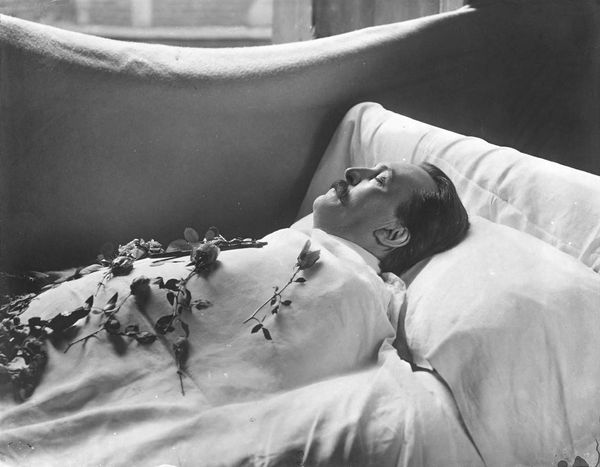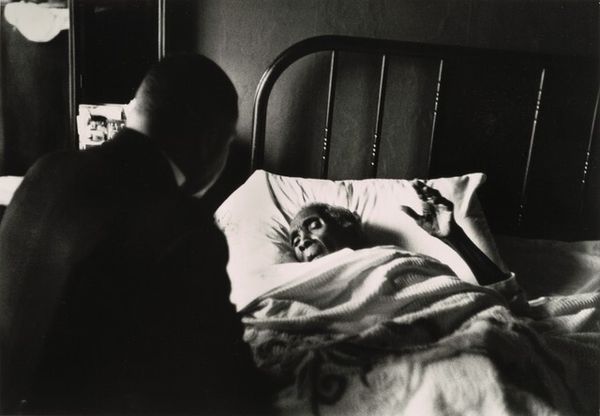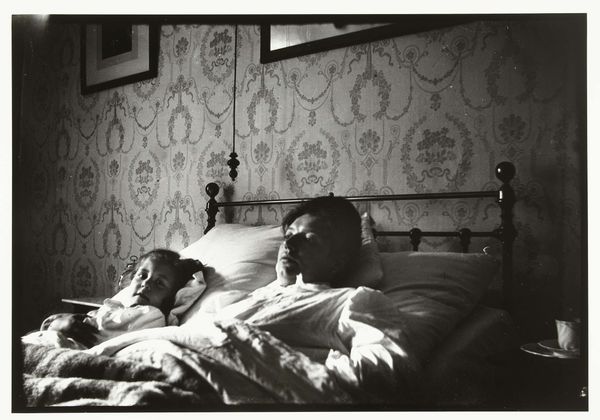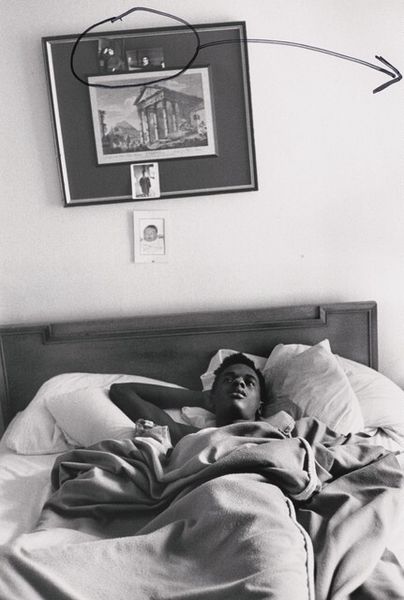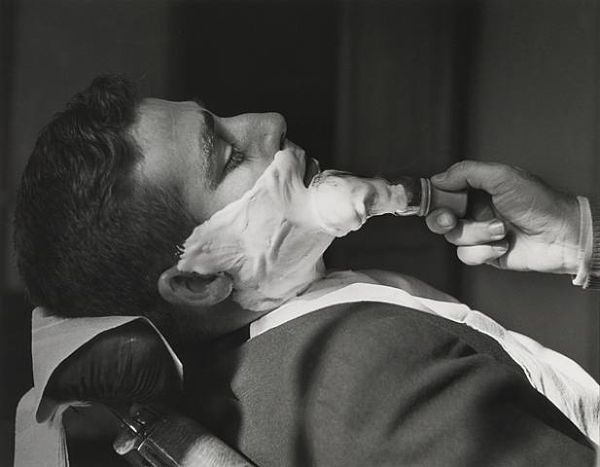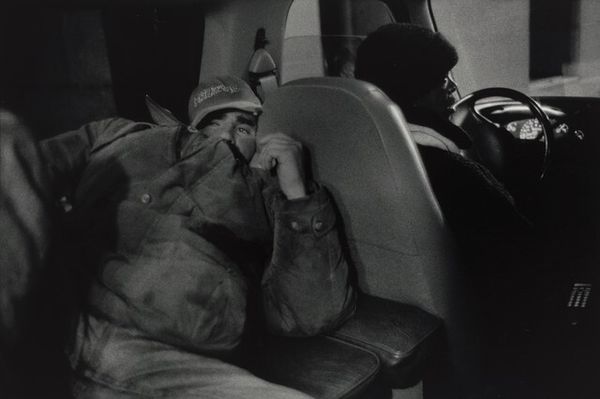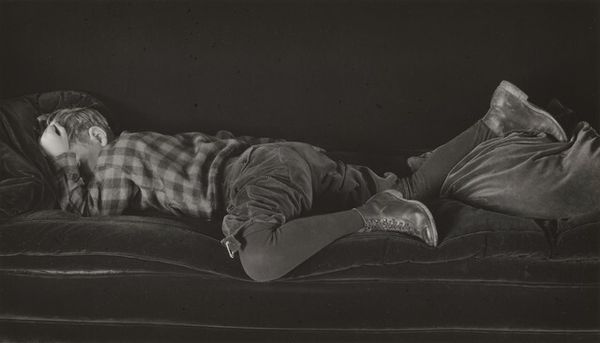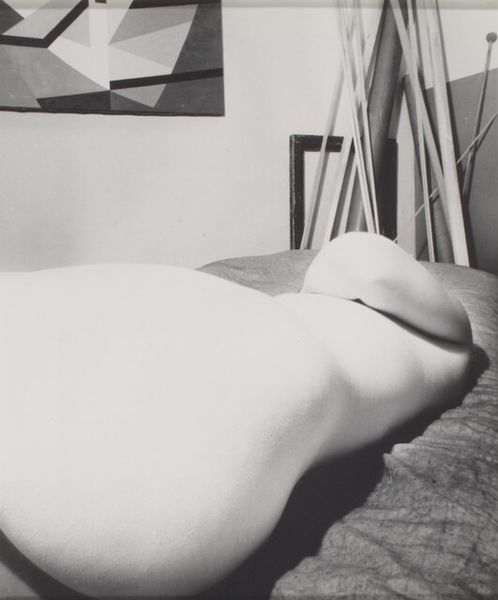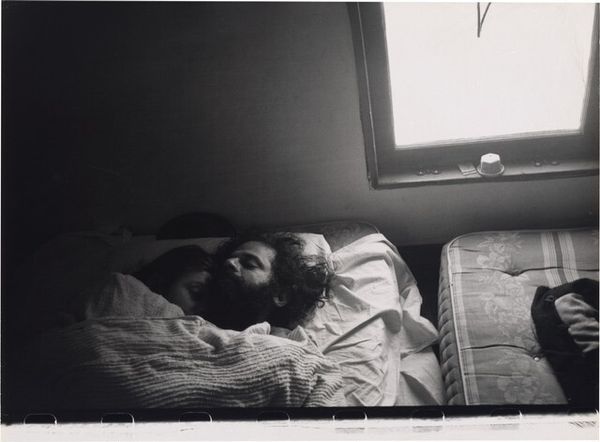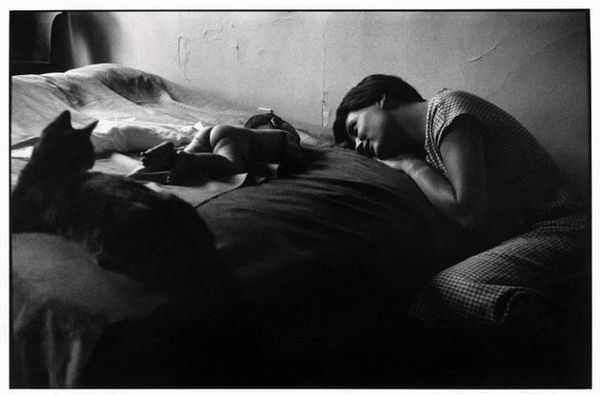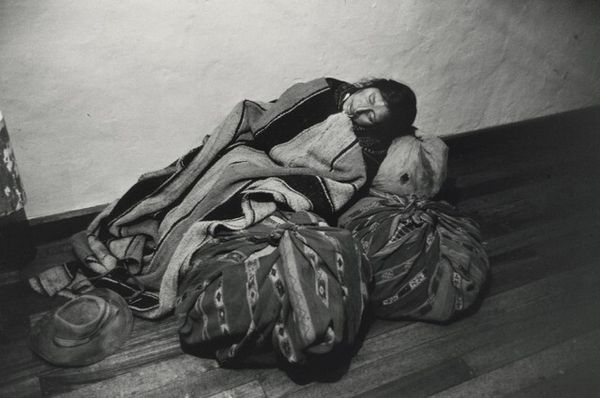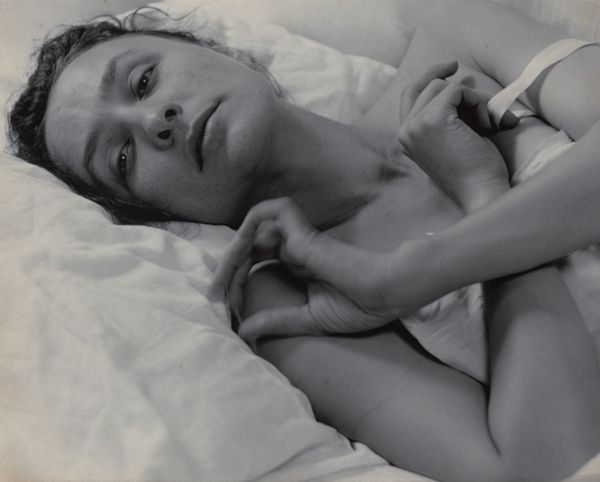
photography, gelatin-silver-print
#
portrait
#
contemporary
#
photography
#
black and white
#
gelatin-silver-print
#
monochrome photography
#
ashcan-school
#
monochrome
#
realism
#
monochrome
Dimensions: image: 80.01 × 80.01 cm (31 1/2 × 31 1/2 in.) sheet: 108.59 × 101.6 cm (42 3/4 × 40 in.)
Copyright: National Gallery of Art: CC0 1.0
Editor: This black and white photograph, simply titled "Untitled," was created by Rosalind Solomon between 1987 and 1988, using the gelatin-silver print method. It's a striking portrait, almost jarring in its directness. What draws your eye when you look at this image? Curator: The materiality is so potent. Think about the process – a physical development of an image capturing a specific, tangible moment. The gelatin-silver print process itself links this piece to the history of photographic production. It makes me think about the labor involved, the choices in developing the image, the darkroom practices, and the social implications embedded in those choices. Editor: Social implications? Can you explain that further? Curator: Consider the context: the late 1980s. What narratives were prevalent? How did access to healthcare, especially for vulnerable populations, factor into the political and social landscape? The starkness of the monochrome removes any sense of idealized beauty, forcing us to confront a potentially uncomfortable reality of illness and dependency. Editor: It feels like an unvarnished truth, a look into something very private. Does the Ashcan School influence apply here? Curator: Yes, in a way. Like the Ashcan School, Solomon appears to be documenting a slice of life, unglamorous and real. But instead of focusing on urban bustle, it examines the intimate, physical realities of illness and care. How do you feel the artist employs the medium itself – the gelatin silver print – to shape the viewing experience? Editor: It lends it a sense of historical weight, almost like a document rather than simply an image. I see how understanding the process adds another layer to its impact. Curator: Precisely! It highlights that even within seemingly straightforward documentary photography, material and technique always play a critical role in constructing meaning and prompting social understanding. Editor: That’s a perspective I hadn't considered before; the material choices shaping the social commentary. Thank you!
Comments
No comments
Be the first to comment and join the conversation on the ultimate creative platform.
